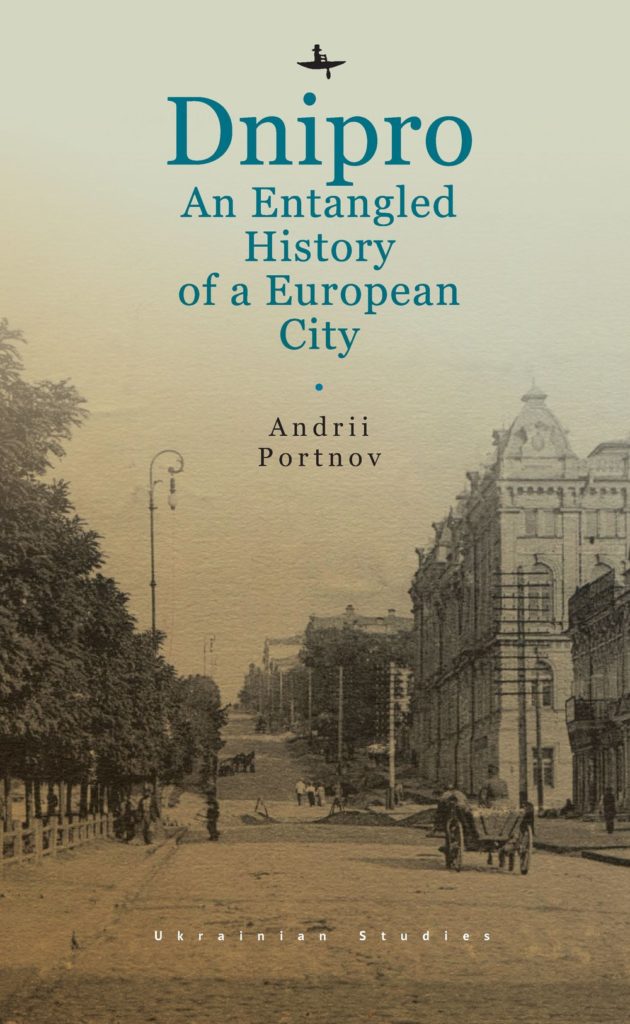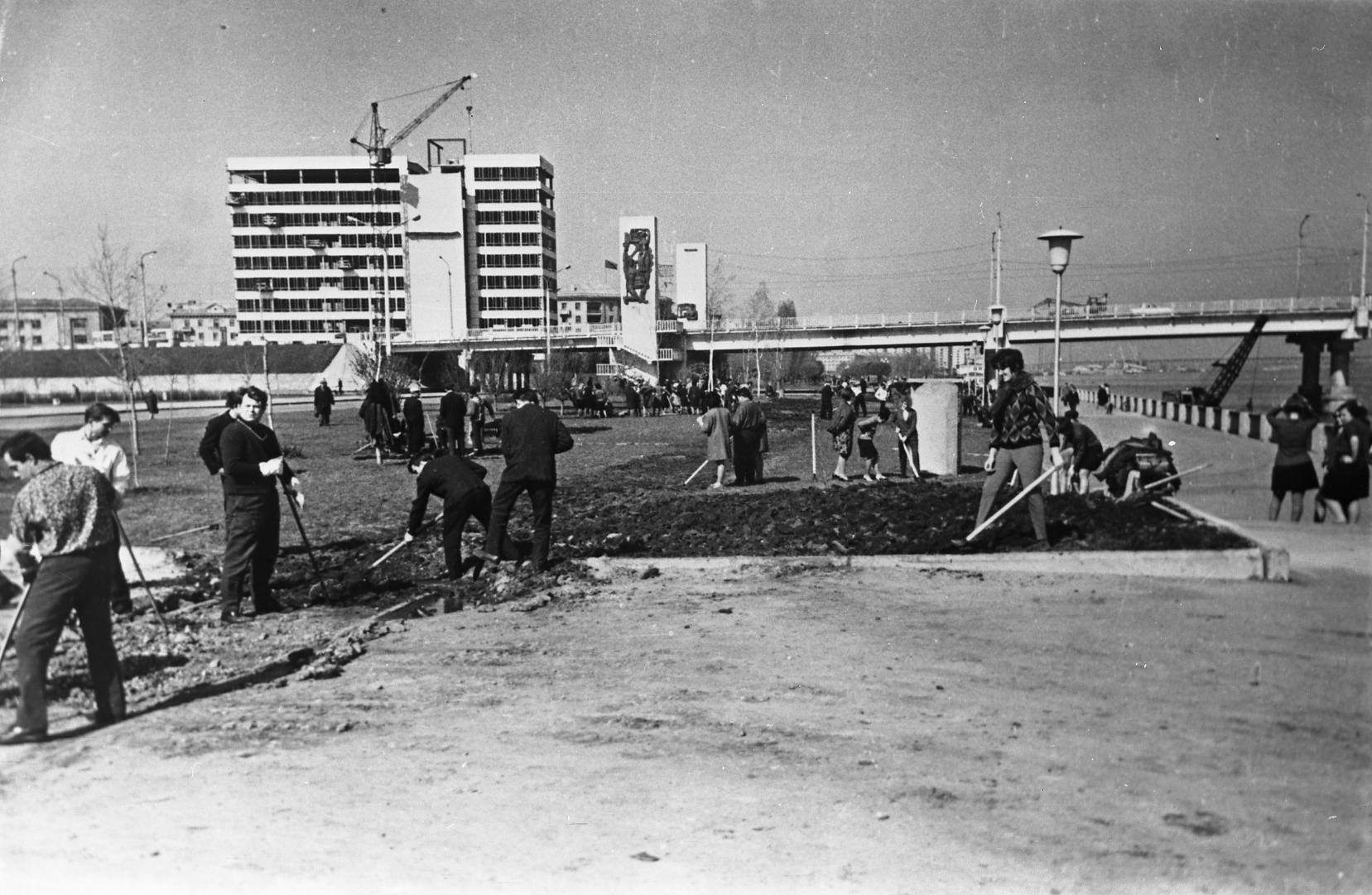In 2022 the world has seen the book of Chair Professor of Entangled History of Ukraine (European University Viadrina) Andrii Portnov, titled “Dnipro: an entangled history of a European city”. This book became the first general attempt to write for a wide English-speaking audience the holistic history of one of the most fascinating and complicated cities at the crossroads of Center, South, and East of Ukraine – Dnipro. This work has already sparked a vivid interest among both European and Ukraine historians so far as the last meaningful research in English devoted to Dnipro(petrovsk) belonged to Sergei Zhuk in his book “Rock and roll in the rocket city” (2010).
As the author states in the introduction, the purpose of the work was not just a comprehensive presentation of the history of the city, but also the search for ways to synthesize total and local historical approaches. Becoming, as it were, the third in the discussion between Andreas Kepler and Mark Von Hagen, the author proposes to look at the history of the Ukrainian city from the position of polyethnicity and the complexities of cultural, social and political interactions in several historical periods (p.14). Furthermore, Portnov in his work tried to focus not only on narrow local but also on the wider regional, national and transnational contexts. One of the main tools that provided the multidimensionality of the micro-historical subject, as the author notes, was the use of a conceptual (rather than essentialist) approach in relation to such basic categories as, for example, nationalism, identity, colonialism, and modernity.
The structure of the book is inextricably linked with the key idea of the study which was the metaphor of an unfinished city or a city without its own well-established myth. However, the absence of a stable image of the city is not a consequence of the absence of such at all. On the contrary, it is rather the result of emerging and changing several such guises. In the course of their discontinuous development, the city has experienced the evolution of several mythologies from new Athens to southern Manchester, to the capital of stagnation and to a stronghold of Ukrainian independence at least.
The emphasis on Jewish component in the structure of urban landscape makes Portnov’s work markedly different from previous visions of local historians. Despite of functioning “Tkuma” Ukrainian Institute for Holocaust Studies in Dnipro that also provides studying local Jewish heritage, the prior synthetic researches either ignore the subjectivity this ethnic grope or just use factual data describing other large structures (for example, the First Russian Revolution). But right away, I would like to note that, to put it mildly, I am not impressed with prevailing the “Jewish voice” in the work exclusively from the point of view of social conflict and urban violence. Although, on a par with other groups “oppressed” by the dominant discourse (Ukrainians or the proletariat), the author has an attempt to trace the motives and behavior patterns of each side, which gives a much better understanding of the complex interaction within the public sphere.
As a researcher whose scientific interests pivot around the history of Katerynoslav (name of Dnipro in 1776–1926), I can guess why this particular angle was chosen for Jewish stories (and not only). The problem is the scarcity of sources. Of course, if we are dealing with microhistorical research, we more often than not come across a very limited circle of sources. Therefore, it is critically important to at least briefly analyze the general state of the evidence, identify “black spots” and outline the limits of knowledge. Even official sources on the pre-revolutionary history of Katerynoslav are very fragmentary, while documents on the history of Jewish schools, institutions and daily history are lacking with a few exceptions. The desire for a simple and accessible form for an external reader does not relieve the historian of the obligation to reflect on the situation with sources.

Turning to the drawbacks of the book, I would like to raise the following question. Is it justified to use the category “European city” in the title of the study from the point of view of urban studies? The question of methodological approaches is de facto omitted and not formulated by the author. With the exception of attempts to synchronize local events with long-term processes (colonization, modernization) and catastrophes (world wars, genocide) inherent in the European continent, it remains unclear how the city’s Europeanness is articulated. The situation looks even more peculiar, given the place occupied by the deconstruction and analysis of identity metaphors in this research. On the one hand, is stated that during all periods of existence, Katerynoslav was avoiding the distinct self-identification, on the other hand, this frame is set by the author himself.
Even if we assume that Europeanness is determined by general trends in the development of Western cities, then what about the 70-year (approximately one third of the timeline) period of virtual isolation and Soviet experiments on the city structure? Such a question made itself felt in the section devoted to the period of the 1960-80s. An analysis of such phenomena as closed Soviet cities, clan elites (even imaginary), the dissident movement and punitive psychiatry should not contribute to understanding in the category of Europeanness.
And I will note perhaps the last critical conceptual remark. Despite the fact that the book rather skilfully and carefully draws attention to the competition between national narratives and self-identifications, the social history of the urban population is rather superficially described. Simply put, if in a society national (ethnic) categories are not dominant (or deliberately removed from the agenda), then categories such as estate or class begin to play a more significant role.
In Katerynoslav’s history, there are at least several periods of the rapid increase in population due to the influx of rural inhabitants from the suburbs and the region (late 19th century and after the SWW’s span). Thus, the population structure has changed significantly and the line between rural and urban might have been blurring. But to what extent? What type of relationship existed between the city and the countryside? This question is actual not only for Katerynoslav case, but also for many Ukrainian cities which encountered with a powerful rural wave (for instance, Lviv after the SWW).
Another important point concerns the potential usage of national categories in studying the post-war Soviet Union. The assertion that the dissident movement (which can also be conditionally considered purely national) covered a very small segment of the population is hardly debatable. The tragic story presented by the author with the famous writer Oles Gonchar just fully reveals the problem of Soviet schizophrenia in relation to the national discourse, participation in which was not punished only in cases of passive involvement. Nevertheless, Gonchar’s drama is an exception, an attempt (even an unconscious one) to offer an alternative to the system vision. But how did the average urban residents, who actively perceived and supported the myth of the exclusivity of the city, think and fit into this system? This is an important question that can hardly be covered through 2 pages in the daily life section.
One way or another, Andriy Portnov’s book is a high-quality professional research that reveals to the outside reader not only the history of an outstanding Ukrainian city, but also how global processes influenced its inhabitants. And, which is no less important, in the book the author accumulated (although he did not reflect on) the main body of works, primarily touched at the history of the Dnipro, constructing a kind of collective historiographical portrait for the external reader. It remains to be hoped that this book will serve as a contact field for Ukrainian and Western researchers in an attempt to unravel the history of Ukrainian cities which, however, are entangled as well.
